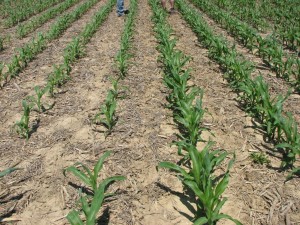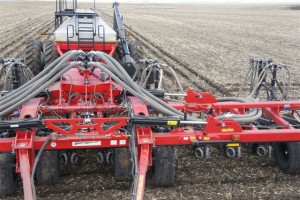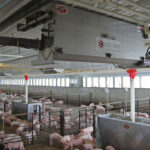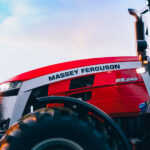Agro-Brief: Nutrient Management – Banding
By: Darren Goebel, Director – Global Commercial Crop Care Improve Farm Profitability Reduce Nutrient Losses Improve Nutrient Use Efficiency Increase Yield Reduce Nutrient Stratification Discussion: Growers are always looking for ways to improve farm profits, even more so in a down...
Agro-Brief: Nutrient Management – Banding
By: Darren Goebel, Director – Global Commercial Crop Care Improve Farm Profitability Reduce Nutrient Losses Improve Nutrient Use Efficiency Increase Yield Reduce Nutrient Stratification Discussion: Growers are always looking for ways to improve farm profits, even more so in a down...By: Darren Goebel, Director – Global Commercial Crop Care
- Improve Farm Profitability
- Reduce Nutrient Losses
- Improve Nutrient Use Efficiency
- Increase Yield
- Reduce Nutrient Stratification
Discussion:
Growers are always looking for ways to improve farm profits, even more so in a down commodity market. One opportunity to achieve better margins is incorporation of fertilizer banding into nutrient management programs. Banding nutrients, as shown above, allows producers to variably apply nitrogen, phosphorus, and potassium, blending the right source at the right rate in the right place, at the right time. These are the four R’s of nutrient management that improve farm profitability and promote environmental stewardship.
Why Banding? Banding concentrates fertilizer in the root zone. This is beneficial in several ways.
- Some soils depending on soil texture and organic matter levels , may capture a portion of applied nutrients making them unavailable to plants. The ability for soils to capture and hold nutrients is measured by cation exchange capacity or CEC. When fertilizer is banded in the soil, the nutrients come into contact with less soil than if they had been broadcast and incorporated. University soil fertility guidelines prescribe reduced rates when banding for this reason. Some recommend up to 50% less when banding compared to broadcasting. Keep in mind that even when banding, it is important to apply crop removal rates to avoid mining soils.

- Banding nutrients may provide a starter effect. The corn on the right in the picture had P & K banded 4-5” deep into soybean stubble the prior fall. Concentrating nutrients under the row allows better early season root interception and uptake leading to increased growth and vigor.
- Banding fertilizer reduces environmental losses compared to surface applied broadcast applications. Rainfall after fertilizer has been broadcast applied may result in losses depending on severity of rain event and cropping system. Banding protects fertilizer from losses due to runoff.
- It has been proven that in pure no-till systems, nutrient stratification occurs over time with continued broadcast applications. Stratification occurs because nutrients are continually broadcast on the surface while roots mine nutrients from deeper soil layers. Since most nutrients move via mass flow or root interception, it is difficult for the plant to access nutrients stratified in the top inch or two of soil, especially in dry years. Banding nutrients in the root zone addresses this issue and alleviates stratification.
Economic Review:
- Equipment: Many growers already have the tools required to band nutrients. If a grower has an air cart and a drill or tillage tool, it is fairly easy to setup. Make sure the air cart being used for fertilizer incorporates stainless steel components to reduce corrosion. Some air carts are better suited to seed due to less than ideal corrosion protection.
- Variable Rate: Air carts are set up to apply variable rate fertilizer. Many growers are finding that it is possible to boost yields while reducing cost by more accurately placing nutrients where they are needed in the field.
- Crop yields can be maximized with the appropriate nutrient plan that places the right amount of nutrients in close proximity to the plant.
AGCO “New Equipment” Solutions:
- The current 9830 and 9850 Sunflower Air Dills setup in a 6/24” (soybean special) configuration, paired with a 9900 series cart provide the opportunity to band fertilizer in the fall and seed soybeans for the grower in the spring.
- 9900 Series Air Carts with their stainless steel construction provide a great value for farmers looking to save a pass by incorporating fertilizer with a current tillage tool or through a bander during planting.
- The new 9830NT is the perfect multi-use tool that can be used to incorporate fertilizer as well as seed small grains and soybeans. This allows farmers to have a single tool that can cover 100% of their acres each year and provide at quicker return on investment.
Summary:
Banding nutrients is a good way to practice the 4Rs of nutrient stewardship which include the right sources, the right rate, at the right time, and in the right place.
Online References:
http://www.prairieswine.com/pdf/3506.pdf
http://www.extension.umn.edu/agriculture/nutrient-management/phosphorus/docs/FO-6797-B-1.pdf




